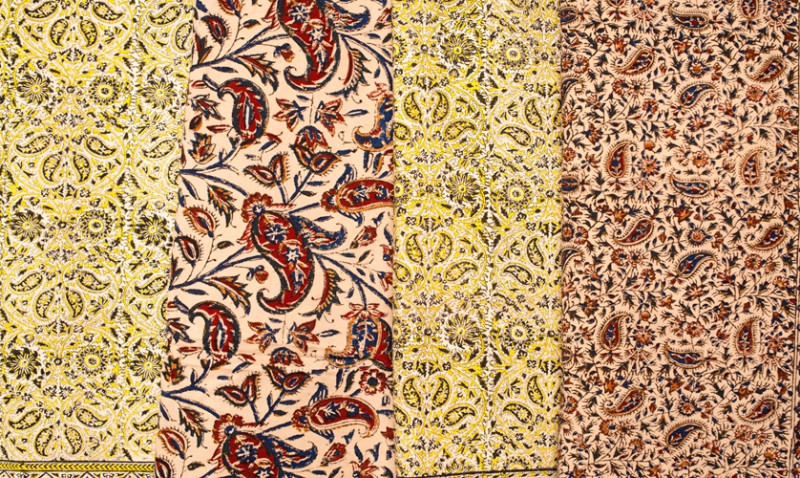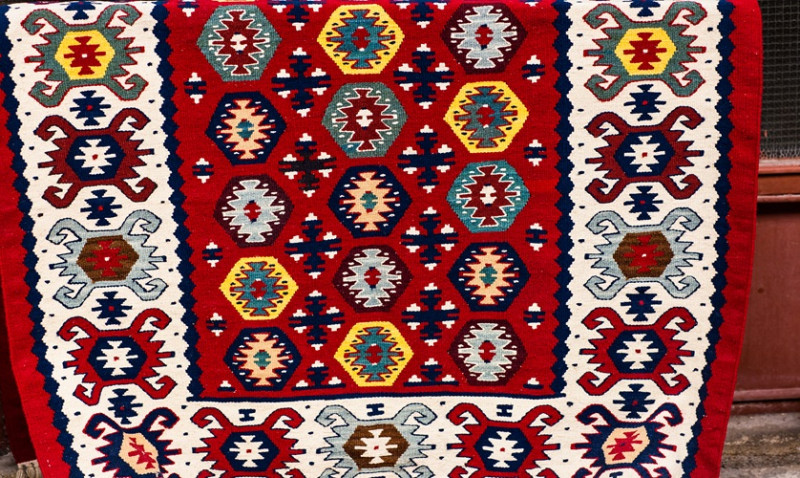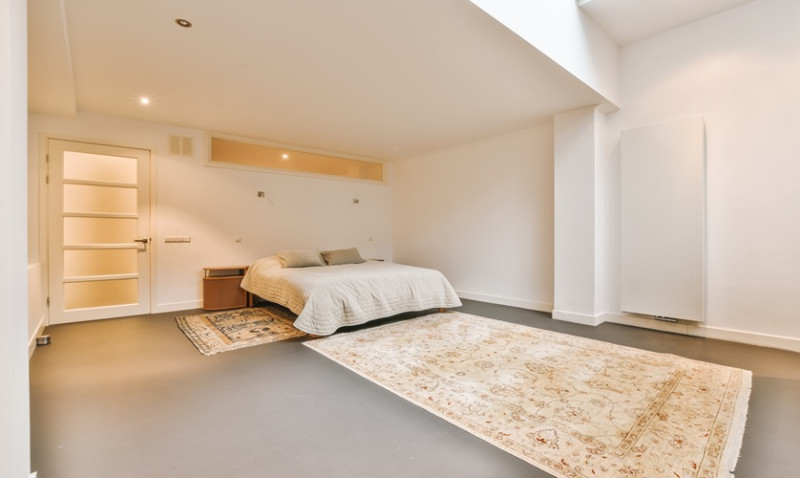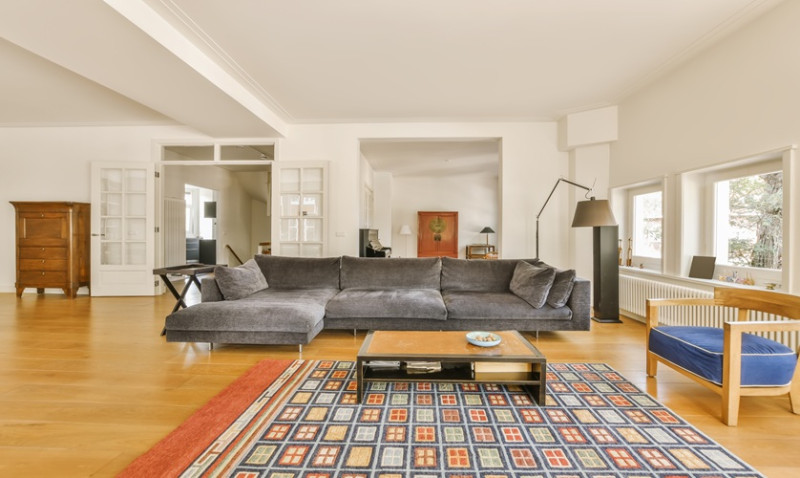
Whether you're a young professional decorating your first flat, a DIY enthusiast revamping your space, or an architect designing for clients, area rugs are one of the most versatile and transformative additions to any room. They provide warmth, texture, definition, and a dose of personality within seconds. Plus, they’re easier to swap out and style than most permanent fixtures—making them perfect for renters and homeowners alike. In this guide, discover room-by-room ideas to help you select the perfect area rug for each space in your home.
Living Room Rugs: Set the Tone for Comfort and Style
The living room is the heart of the home—a space to unwind, entertain, and bring friends and family together. Choosing the right area rug for this space is essential in tying together your interior style and creating a cosy atmosphere. The rug often becomes the anchoring point of your layout, helping to define the seating area.
When sizing a rug for the living room, go big. Ideally, all the front legs of your furniture should rest on the rug. For larger rooms, you might even consider a rug that encompasses the entire furniture set. Avoid rugs that are too small, as they can make the room feel disconnected and awkward.
Style-wise, a geometric or contemporary pattern works great in modern flats and homes, especially in urban UK dwellings with minimalist design. For those chasing a classic, timeless appeal, opt for Persian-style or wool-blend rugs with traditional motifs and warm earth tones.
If you have pets or expect a lot of foot traffic, look for rugs with low-pile textures that are easier to clean and less prone to trapping pet hair and debris. Consider materials like polypropylene or natural fibres like jute for durability and minimal upkeep.
Bedroom Rugs: Add Warmth Underfoot
Nobody likes stepping out of bed onto a cold floor. A bedroom rug adds that all-important softness and warmth first thing in the morning and creates visual balance in your private sanctuary. The ideal rug should stretch at least two-thirds of the length of the bed and extend beyond the sides and foot for maximum comfort and style.
For a spacious bedroom, use a large rug that fits under the bed and bedside tables, anchoring the entire layout. In smaller UK homes or flats where space is more limited, consider two runner rugs placed on either side of the bed or a single rug at the foot for a cost-effective way to style with intention.
Shag rugs or thick woolpile rugs work well in bedrooms where the need for durability is lower and comfort is paramount. Neutral tones keep things serene and sophisticated, though patterns can be a playful way to bring life to a minimalist aesthetic.
Don’t overlook layered rugs either—this on-trend technique allows you to place a small, plush rug over a larger flatweave. It’s perfect for those who want to add personality or colour without investing in a new large-scale floor covering.
Dining Room Rugs: Functional Meets Fashionable
While adding an area rug in the dining room may seem bold, it can entirely reframe the space, lending it formality and cohesion. A rug under the dining table helps define the dining zone in an open-plan layout, common in many modern UK homes.
However, with food and drink spills being inevitable, the material, colour, and pile height become key considerations. Choose flatweave or low-pile rugs that are easy to clean, and go with dark or patterned designs that can hide accidental stains more easily.
As a rule of thumb, your dining room rug should be large enough so that when chairs are pulled out, they still remain on the rug rather than tipping off the edge. Below is a useful table to estimate the right rug size based on your table size:
| Dining Table Size | Recommended Rug Size |
|---|---|
| 120cm round table | 180cm round or square rug |
| 150cm x 90cm table (4-seater) | 240cm x 170cm rug |
| 200cm x 100cm table (6-seater) | 300cm x 200cm rug |
Woven vinyl or high-performance synthetic rugs are excellent choices if style and functionality are both priorities. They are durable, attractive, and easy to clean—ideal for households with children or frequent hosting.
Kitchen Rugs: Practical Padding Where You Need It
Though not typically associated with rugs, kitchens benefit enormously from the right floor covering. In a room where you spend significant time standing, especially near the sink or hob, a well-placed rug or runner can ease fatigued feet while also protecting flooring from spills and stains.
Look for stain-resistant, washable, or outdoor-rated rugs in materials like polypropylene or PET. Flatweaves and machine-washable cotton rugs are other practical options that provide comfort while standing and are resistant to abrasion and wear.
Long runners work best in narrow UK galley kitchens, placed along the main walkway or in front of key workspaces. Alternatively, place a smaller rug just beneath the sink where water splashes are most common.
Don’t hold back when it comes to colour or patterns here. Bold stripes, Moroccan influences, or Mediterranean tiles in rug form can bring energy and charm to an otherwise utilitarian space.
Bathroom Rugs: Style and Safety Combined
Bathrooms may be the most overlooked space when it comes to decorating with rugs, but they deserve attention too—especially in older homes where tile floors can be icy and slippery. Bath mats are functional, but a well-chosen area rug or runner can add both flair and safety underfoot.
Opt for moisture-resistant materials like 100% cotton, bamboo, or quick-drying synthetics to resist mould build-up. Look for a rug with a non-slip backing to prevent accidents, particularly in family homes.
For traditional UK bathrooms with clawfoot tubs or Victorian features, consider vintage-style rugs with ornate motifs to enrich the period character of the room. In modern or monochrome settings, Moroccan tile prints or boho-inspired motifs can act as eye-catching accents.
Keep the size modest—a rug near the bath or in front of the vanity is usually sufficient. Be sure to machine wash or air dry regularly to maintain hygiene and appearance.
Hallway Rugs & Entryways: Make a Memorable First Impression
The hallway or entrance sets the tone for the rest of your interior. A beautiful area rug here gives guests an instant sense of your personal style while serving the practical need of catching dirt from shoes. It also helps soften acoustics in narrow spaces, especially those with wooden floors common in Edwardian and Victorian UK homes.
Runners or slim rectangular rugs work best in hallways. Measure the entire hallway space and select a runner that leaves a few centimetres of flooring showing on each side for a balanced, custom look. Match the rug style to the mood you want to create—natural jute or sisal for earthy and modern vibes, or classic florals for a more traditional feel.
Since this area endures high foot traffic, durability is key. Choose flat-weave rugs in dirt-hiding patterns, and if possible, opt for indoor/outdoor designs that are easy to shake off or hose down as needed.
Layer the look with a wall mirror or narrow hallway console to complete the welcoming aesthetic.
Home Office Rugs: Define a Productive and Peaceful Workspace
With many UK homeowners converting spare rooms into home offices, the inclusion of a rug can dramatically improve both the look and feel of your work environment. A rug adds a soft finish beneath your desk and chair while muting sound and grounding your furniture layout.
If your desk chair is on castors, avoid thick-pile rugs that can cause trouble with mobility. Low-pile or flat-weave rugs are ideal under a desk, providing enough cushion without interfering with movement.
For a home office that energises your work, pick a vibrant apricot, teal, or burgundy rug. Neutral tones, on the other hand, create a calm, distraction-free space—perfect for focused work or creative projects.
Natural fibre rugs like coir or jute are breathable and eco-friendly, aligning with the growing demand for sustainable interiors across the UK design scene.
Final Thoughts: The Power of the Perfect Rug
From curated calm in a bedroom to welcoming warmth in an entryway, there really is a rug for every room. The key lies in balancing style, function, and room-specific needs. Don’t be afraid to express your personality through colour and pattern—a thoughtfully chosen area rug is a design decision that can elevate your entire interior story.
By tailoring your rug choices to each space, you can seamlessly blend aesthetics with everyday practicality. Whether you’re working on your own renovation, consulting with clients, or experimenting with your DIY creativity, investing in the right rug strategy can transform a house into a home.





